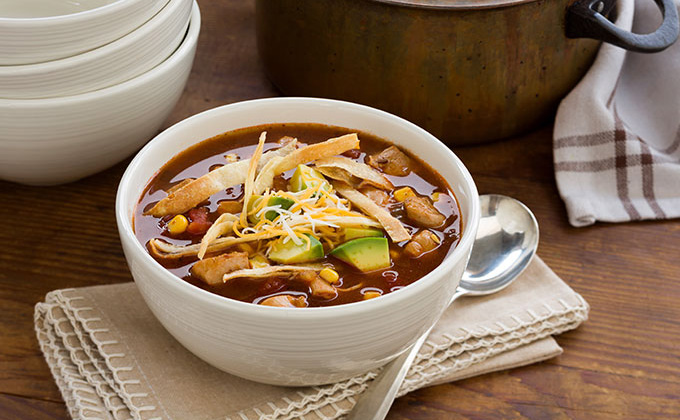One of mankind’s oldest dishes, soup, has been used for generations to nourish, warm, and restore. In fact, the French used the word restoratif for soups and stews given to weary travelers at roadside taverns, hence the origin of the word restaurant.
There’s no time like a wintry afternoon to try your hand at making a steaming pot of soup. A few tips and tricks will help ensure that your bisque, chowder, or potage turns out perfectly.
Know Your Stock
The base for most soups is stock, which can be made from just about anything: vegetables, beef or chicken bones, seafood, herbs, or even a rind of Parmesan cheese. (Did you know? The difference between stock and broth is stock’s inclusion of bones in the cooking liquid, which provide gelatin and full, rich flavor. Broth is only meat-based, but one can easily be swappped for the other, according to taste.)
Of course, you can always purchase stock, but homemade stock is more flavorful and so easy to make. For the simplest chicken stock to use in recipes like our Chicken Tortilla Soup and Broccoli Chowder, place the carcass of one roasted chicken in a 4-6 quart pot, along with 1-2 peeled and quartered onions, 3-4 halved stalks of celery, 2 halved carrots, 1-2 bay leaves, 4-5 thyme sprigs, and 6-8 parsley stems. Fill with water to cover. Simmer on low heat for 2-6 hours, uncovered, to concentrate the flavors, topping up with water if it gets too low. Remove from heat and skim off any fat from the top as it cools. Strain liquid with a pasta strainer or cheesecloth, discarding solids. Once it’s completely cool, freeze the stock in zip-top bags or use immediately.
Watch the Salt
While it’s smart to salt soup throughout making it, remember that the liquid will concentrate as the soup cooks and evaporates. In other words, be careful not to oversalt. If you include too much though, honey can counteract salt’s effect on soup. Try adding a teaspoon at a time until your soup tastes balanced and delicious.
Get Immersed
Handheld immersion blenders, sometimes called “stick blenders,” can puree soups to the finest, smoothest texture, all while being a snap to clean up. Instead of pureeing something like our Cheddar Apple Soup in a standing blender in batches, invest in a simple immersion blender that allows you to puree all at once.

